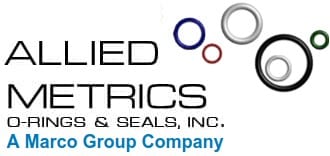Durable Hydraulic Seals That Last Longer & Withstand Higher Pressures
Rod seals ensure pressurized fluid stays out of the hydraulic system. We offer durable single-acting and double-acting seals that insure the rod performs its job. Customization available.
Piston seals are specifically designed to prevent pressurized fluid from leaking in-between the piston and bore. Available in single- and double-acting configurations. Customization available.
Why Are Hydraulic Seals Important?
Hydraulic seals (also referred to as hydraulic cylinder seals or shaft seals) are devices designed to keep fluids from escaping from cylinders or pumps while simultaneously preventing foreign contaminants from entering them. They are vital pieces in many types of machinery since they help create a method for fluid power to be converted into linear motion. Given the working conditions found in many of these industries, these seals need to be built to withstand high pressure. That durability is exactly what makes Allied Metrics the trusted hydraulic seal manufacturer it is today.
Hydraulic Seal Components
At Allied Metrics, we offer our customers a full range of high-quality seals suitable for numerous applications. Our hydraulic seals are outfitted with seven precision-manufactured components. Each component is heavily scrutinized during and after production to ensure our clients receive high-quality, reliable seal solutions. We can fill large orders or requests for individual seal components on an as-needed basis.
This strict attention to detail ensures that the parts we manufacture will adhere to rigid industry standards and user expectations. We thoroughly inspect the following elements of every seal:
- Buffering
- Cushioning
- Rod wipers
- Rod seal
- Wear ring
- Head seal
- Piston seal
Compatibility with O Rings
Hydraulic seals are regularly used in tandem with O-rings. In some instances, these O-rings have been known to fail. There are a number of common causes for O-ring failure, including:
- Improper gland design
- Incorrect O-ring size
- Incompatibility between the O-ring elastomer and environmental elements
- Improper O-ring installation
- Inadequate O-ring lubrication
Avoiding these pitfalls is essential to preventing larger workplace component failures. If an O-ring fails, it could prove catastrophic. The Allied Metrics team takes steps to avoid O-ring failure. Our installation staff ensures that seals are installed properly and our clients understand how to care for their components.
Durable Seals, Minimal Cylinder Repair
Allied Metrics is a leader among hydraulic cylinder seal manufacturers. Our seals and other cylinder repair parts are built to last far longer than the average seal and are held in high regard by many well-known Fortune 500 companies and OEMs. And because our seals come in many different materials, dimensions and sizes (ranging from 4 mm to 1000 mm), we make hydraulic cylinder repair easy. Whether you’re looking for standard sizes or need a full set of custom hydraulic seals, we have the ability to provide any shaft seal type with our cutting-edge machining services. Of course, not every machine contains both rods and pistons, so be sure you know the difference between the two, and which one is the type of seal that you need.
Hydraulic Seals Replacement Procedure - Your Handy Reference
Fortunately for our customers, replacements and repairs are rarely necessary when using our seals. The staff at Allied Metrics is comprised of industry experts who understand the critical nature of component longevity.
In some cases, however, replacing hydraulic seals does become necessary. Improper installations, failure to account for environmental factors during seal selection, or simple wear and tear may eventually necessitate the need for seal replacement. A broken or malfunctioning seal can lead to damage in surrounding areas, so this problem should be handled as soon as it is identified.
The proper way to go about replacement depends on the variety of cylinder. Wire ring and threaded head cylinders both require different replacement processes:
Wire Ring Cylinders
- Begin by retracting the rod assembly, removing the external steel wire ring, and cleaning accumulated dirt and debris.
- Use a mallet and punch to push the head into the cylinder tube and expose the internal tube groove.
- Straighten the plastic removal ring and insert it into the groove.
- Extend the rod, pull the head out of the tube, and remove the plastic removal ring; from here, the locknut, piston, and head can also be removed.
- Inspect and replace seals with new components if necessary.
Set Screw Style Threaded Head Cylinders
- Begin by loosening the set screw and turning off the end cap.
- Remove the piston, rod, and gland assemblies.
- Remove the lock nut to disassemble the piston from the rod assembly.
- Remove seals, inspect for damage, and replace as necessary.
Locking Ring Style Threaded Head Cylinders
- Loosen the locking ring and turn off the end cap.
- Remove the piston, rod, and end cap.
- Disassemble the piston from the rod assembly by removing the lock nut, then slide off the end cap.
- Remove seals, inspect for damage, and replace as necessary.
The above steps should be sufficient to repair hydraulic seal damage in most scenarios. And while we don’t perform cylinder repair, we do supply the seals necessary to replace your parts. Reach out to us to inquire about our stock of hydraulic seals.
Order Your Seals Online Today
Order online from Allied Metrics today and get a quick turnaround. Standard product orders take about a week to deliver and custom product orders take slightly longer (about four to six weeks). For questions regarding our custom hydraulic cylinder seals services, please call us at (973) 383-2487.




